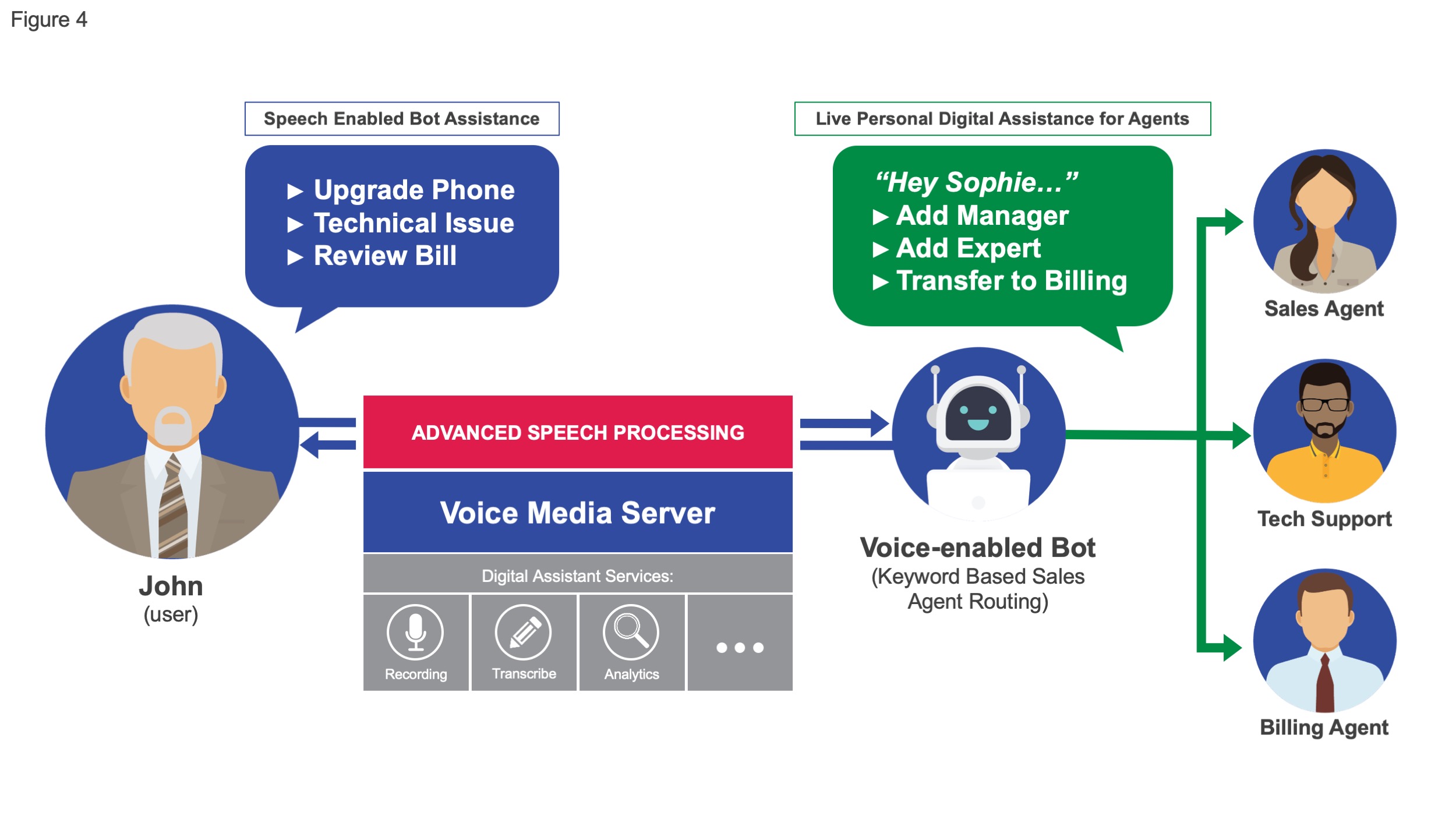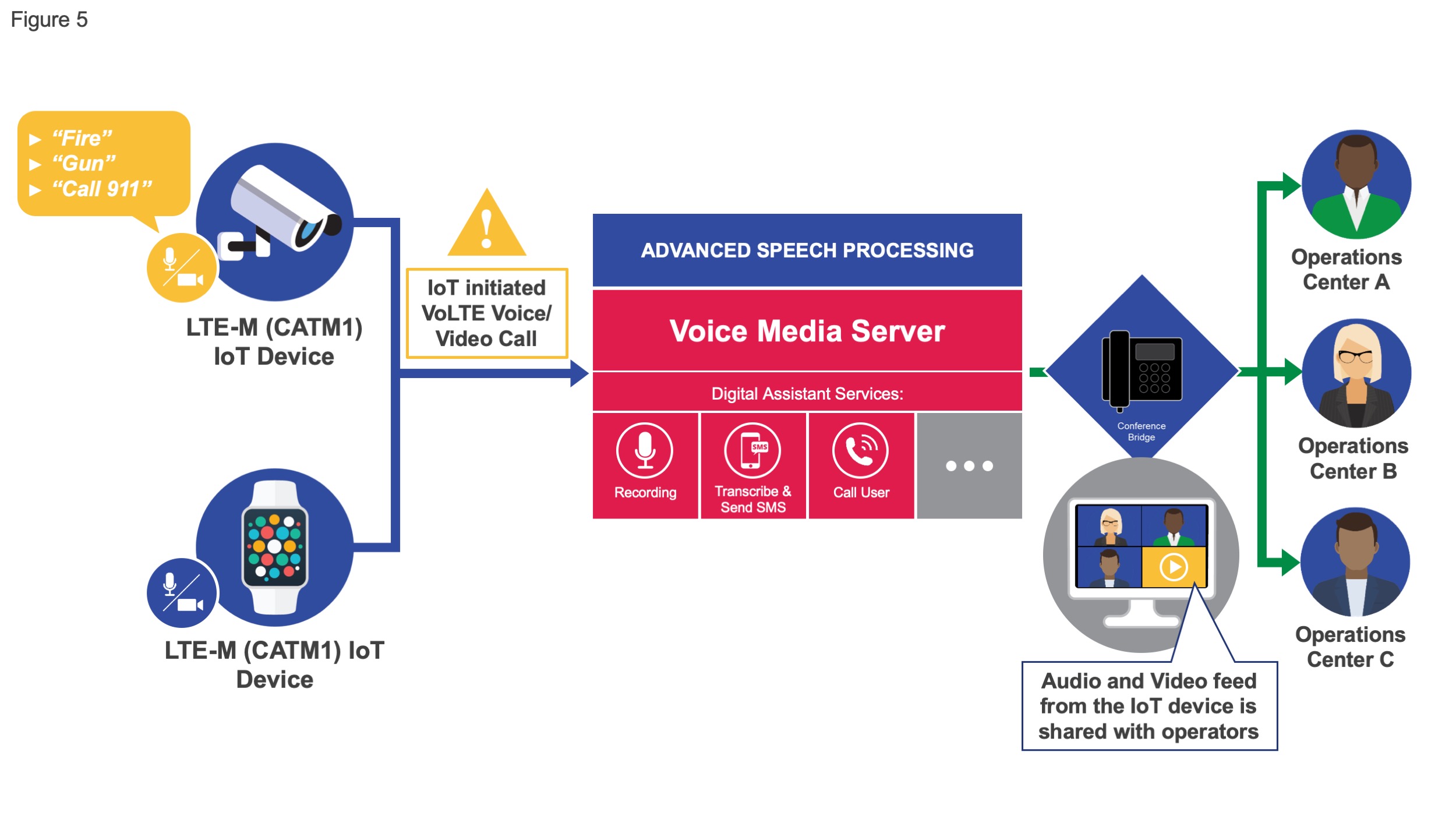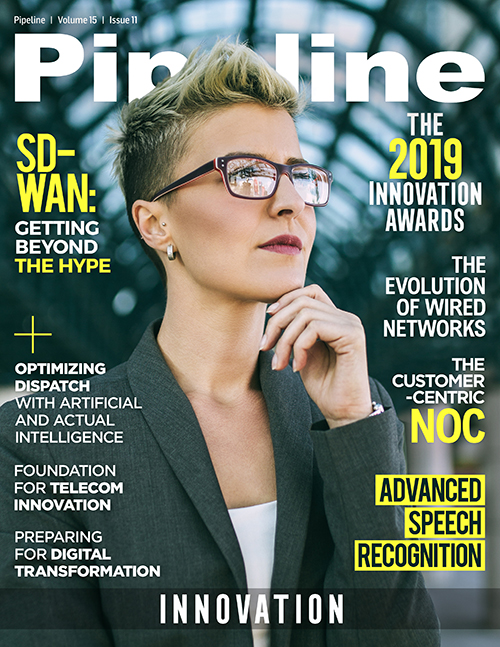Hey Siri, Tell Me About Advanced Speech Recognition
 Figure 4. Call Center Example: Call Triggered Key Words and Speech Transcription
Figure 4. Call Center Example: Call Triggered Key Words and Speech Transcription
In an IoT-triggered example, the IoT device can detect a key word or sound and then be triggered to place an inbound call over a VoLTE network that enables its microphone or camera. Any audio in the surrounding area can be automatically transferred across the network in a live session. The voice media server in the network will receive the audio and be able to detect key phrases to, in turn, take specific actions. A typical use case could be a smoke detector that triggers the IoT device and then triggers a call to the fire department, enabling the firefighters to see and hear the live video stream.
 Figure 5. IoT Triggered Example: Emergency Response Speech Detection and Real Time Multi-party Assistance
Figure 5. IoT Triggered Example: Emergency Response Speech Detection and Real Time Multi-party Assistance
Summary
As speech technology has evolved, an ever-expanding number of opportunities are emerging for CSPs to develop new network-based speech-enabled applications that will drive new revenues. By embedding advanced speech recognition capabilities into a media server that is already deployed in its network, CSPs can add significant value and extend applications to the mass market with in-call speech recognition services at significantly reduced CapEx and OpEx costs.
The opportunities for in-call speech recognition technology are endless and go far beyond the use cases described above. Integrated speech recognition solutions allow CSPs to offer their customers unique and extensible service capabilities that grow over time. As service providers work to reduce churn and grow ARPU for their enterprise and consumer subscribers, speech recognition applications and services can create a strong ROI and innovative edge for next generation value-based services.



















